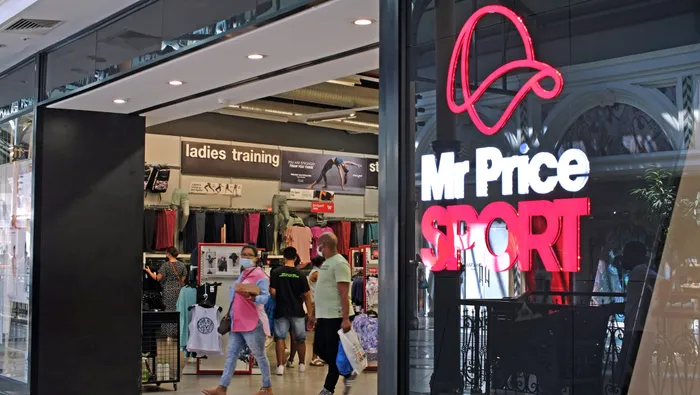Mr Price celebrates 40 years of growth, with ambitious plans for the future
RETAIL

Mr Price Sport store at Canal Walk, Century City.
Image: IAN LANDSBERG Independent Newspapers.
“This year marks 40 years since the opening of the first Mr Price store, and as we celebrate this milestone, we reflect on a journey driven by a bold vision: to make fashion accessible to all South Africans,” said Mark Blair, the CEO of Mr Price, in the retailer's annual report released on Friday.
Since those early days, Mr Price has grown to 3,030 stores, generated over R40 billion in revenue, achieved a market capitalisation of R65 billion, and reached an operating profit nearing R6 billion. Blair emphasized that the core principles established at the company’s inception—low-cost operations, bulk purchasing, minimal markups, and cash-based retailing—continue to underpin its business model. “These fundamentals have allowed us to consistently deliver high-quality fashion at affordable prices, fueling our growth and resilience over the decades,” he noted.
Looking ahead to the first quarter of the 2025 financial year, Blair highlighted the ongoing challenges within South Africa’s constrained economy. However, after the national elections and the formation of the Government of National Unity (GNU), consumer confidence surged, creating a more favorable environment for retail during the latter half of 2024.
Despite challenges posed by the global economy and domestic concerns over the stability of the GNU - along with uncertainty surrounding the national budget and potential VAT hikes - Mr Price made significant gains. The retailer increased its market share by 50 basis points (bps) according to the Retailers' Liaison Committee (excluding Studio 88 and Mr Price Sport), 120 bps per Stats SA (including all divisions), and 40 bps in telecoms, based on GfK data. Gross margin rose by 80 bps in both merchandise and cellular segments.
Operating profit grew by 8.9%, with each of the company’s three main sectors contributing meaningfully. Blair also noted that the three businesses acquired in recent years achieved a combined operating profit of R1.2 billion, a testament to Mr Price’s disciplined approach to acquisitions. “We are selective in our acquisitions, ensuring they align with our stringent investment criteria and support our long-term growth goals,” Blair explained.
However, Blair expressed regret that the company didn’t meet its stock turn target due to unpredictable supply chain disruptions, particularly from shipping delays and Durban Port challenges. On a positive note, stock arrivals were earlier than expected, signaling improvements in the supply chain. “This suggests that our adjustments to buffer supply chain lead times are beginning to show results,” he added.
Looking to the future, Blair remains optimistic that market volatility will stabilise. With falling interest rates and a focus on economic growth and employment from the GNU, he expects consumer spending to recover. In April and May of the new financial year, sales were up 11.6%, setting a strong tone for 2026.
Mr Price’s recent investments and capital allocation decisions have positioned the group for success, even as the retail landscape improves. In the past year, the company invested R830 million, opening 184 new stores, which have already exceeded return expectations.
Looking ahead, Mr Price plans to increase capital expenditure to R1.6 billion in 2026 - the highest in its history. This will include the opening of 200 new stores, further investments in store expansions and technology, and the development of a new Gauteng distribution center slated to go live by September 2026.
“Our vision remains ambitious, and every investment we make is aimed at delivering long-term earnings growth and advancing our group’s strategic goals,” Blair stated. “Our Apex strategy team is working diligently to identify and evaluate opportunities that align with this vision, and we will share our plans with the market at the appropriate time.”
BUSINESS REPORT